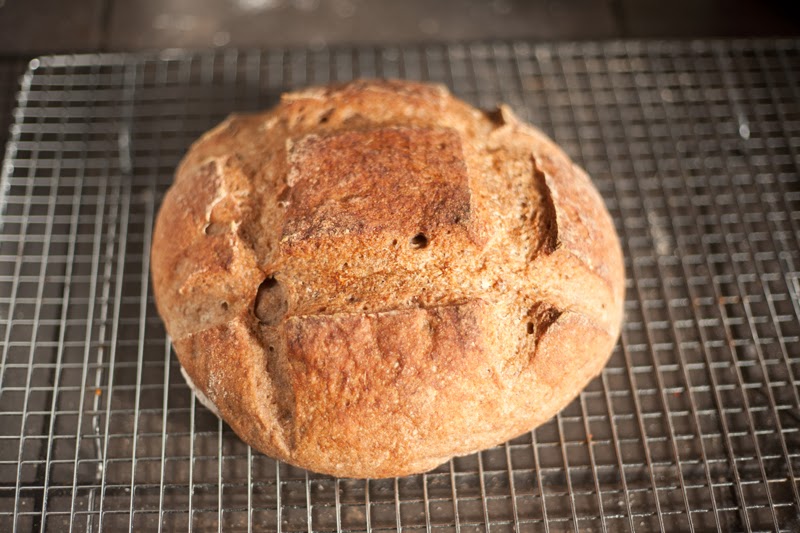What is Sourdough Bread?
Definition
Sourdough is not a description of a type or a flavor of bread - it's a process. Sourdough is an ancient method for making bread that uses a starter of natural yeasts and bacterias found on the grain itself. These microorganisms are cultured by the bread maker to have a healthy balance of flavor and the power to let the loaf rise.
Bread History in a Glimpse
It used to be that sourdough bread was just called bread. Commercial yeast has only been available for the last 100 years. Before that, leavened bread was made using either the sourdough method or in a similar process that used the yeast left over from fermenting alcoholic beverages.
The sourdough process has been used for 10,000-20,000 years. When you think of that length of human history, and then compare it to the last 100 years of bread making, that puts the tradition of sourdough bread in perspective.
Process
Making sourdough bread is more like growing a garden than executing a formula. First, you have to grow a culture. Traditional methods of growing a sourdough culture take a few weeks to establish the right balance of microorganisms. Basically, flour and water are combined in a jar. The fungus and bacteria on the grains duke it out until a balance is achieved in which they can coexist. There are infinite ways of starting and feeding the mixture to optimize the culture for different organisms, most of them derived from trial and error.
Modern techniques can allow you to make a sourdough starter in as little as three days. It's like starting your seeds in a hothouse instead of waiting for the soil to warm in the spring. I will have a recipe for this quick sourdough starter process in my next post.
Why Sourdough?
Sourdough bread can be many flavors - from yeasty and mildly sweet to ultra-tangy. The benefit of the process isn't just the flavor you get from it, but the depth of flavor, which is more complex in sourdough than in commercial loaves. The slow rise, which helps to process the grains for easier digestion and the increased shelf-life of the bread due to acidity and other natural anti-microbial properties are other great benefits of the sourdough process.
Making sourdough bread can sound very complex. However, I will give you some very basic, easy to follow instructions for making your own sourdough starter and a few great gluten-free sourdough bread recipes.




Comments